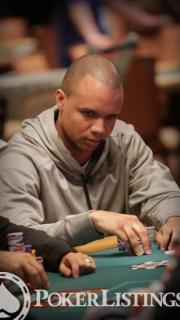By fine-tuning these tactics you’ll have more tools to put to work at the poker table. You’ll be able to better understand your opponents and how to manipulate them, and that will translate directly to money in your pocket.
We already wrote the book on the 10 Essential Texas Hold’em Moves and now we’re back to bring you 10 more.
Today we’re exploring the isolation play, a move that can narrow the field when you’re in a hand and increase your chances of taking down the pot.
In certain situations you don’t want to play marked cards a multi-way pot so by isolating one player in particular you can give yourself a better chance of making the best hand or using position to win the pot post-flop.
The What: While there are a few different reasons to make an isolation play the basic mechanics are the same. An isolation play refers to re-raising an opening raiser in order to push the other players at the table out of the pot, thus isolating only the player against whom you want to play.

Players like Phil Ivey understand that sometimes it's better to be heads-up.
The Where: Using the isolation play against a shortstacked player is most commonly used in tournaments while isolating limpers and maniacs can be used in both tournaments and cash games.
The When: Like most poker moves the isolation play works best when you’re in position.
Isolating the Right Way
Since there are a few different reasons for using the isolation play it’s extremely important to understand the situation, your opponent and why you’re trying to isolate him or her.The basic concept behind the isolation play has to do with reducing the variables in the hand as much as possible so you’re better able to control the outcome.
The more players in a hand, the more likely someone’s going to flop a big hand or get creative with a bluff after the flop.
By isolating just one player you can take control of the hand and increase your chances of winning the pot.
Isolating Shortstacks
The most basic isolation play is used in tournaments when one of your opponents is dangerously low on chips and desperate to double up or pick up the blinds and antes.Imagine you’re on the button and the player in cut-off is very short (six big blinds). Action folds to the cut-off who moves all-in.

Give yourself better odds of winning by isolating shortstacks when they move all-in.
You look down at A-J and must now decide how to proceed.
If you just call, the blinds will have very good pot odds to call with marginal hands (for example the big blind will have to call five big blinds for a chance to win a pot of 20 big blinds).
And as we said before, the more easy cards tricks players in the pot, the harder it’s going to be for you to make the best hand by showdown.
To put it in practical terms let’s say the shortstacked cut-off shoved with K-Q and the big blind is sitting with 5-6 suited.
In a heads-up pot against the cut-off you have a roughly 60 percent chance of making the best hand by the river. If the player in the big blind enters the pot, however, your chances of showing down the best hand drop to 35 percent.
Figure out the odds yourself with our Poker Odds Calculator.
By three-betting instead of calling you price the big blind out of coming along with a speculative hand, allowing you to go heads-up against the shortstack who is shoving with a very wide range.
Isolating Maniacs
In the previous example we were using the isolation play to increase our chances of showing down the best hand, but the same play can be used to isolate an overly-aggressive player, allowing you to use position to win pots after the flop.Imagine you’re playing a $1/$2 cash game and the player to your right is raising way too many hands and generally playing very loose.
You know he can’t have a premium hand every time he comes in for a raise and since you have position, you can use his aggressive style against him.
The next time he raises you look down at pocket fours. It might be tempting to just call and try to flop a set but since you’re only going to flop a four one in eight times, the vast majority of the time you’ll be forced to fold to the aggressive player’s continuation bet.

Proceed with caution when trying to isolate maniacs who play well.
By three-betting you will push those same players out of the hand and allow you to go heads-up against a player who’s out of position and playing a very wide range of hands.
Any two unpaired cards will miss the flop two out three times which means the majority of the time your opponent will be forced to fold when you continuation bet the flop.
Isolating Limpers
Using the isolation play against weak players who limp too much uses the same basic concept as isolating maniacs.Since limpers are usually just trying to see a cheap flop with marginal hands, you can raise in position even if you don’t have a premium hand. Most of the time the limper will just fold but when they do call it’s usually a mistake.
One of the biggest beginner leaks in poker is limp-calling too much out of position with marginal cards.
And since limping too much is generally a sign of a weak player, you should be trying to play as many pots against them as possible, especially when you’re in position.
So next time you identify a player as limping too much consider raising. Hopefully the rest of the table will fold and you’ll either win the pot preflop or go heads-up in position against a weak player which is always a recipe for profit.
没有评论:
发表评论